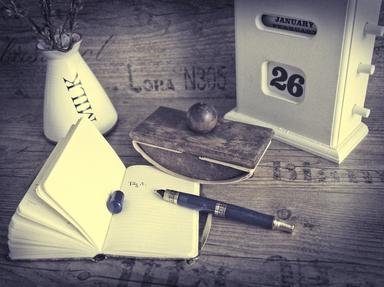Quiz Answer Key and Fun Facts
1. 1502 - The Safawid, or Sufi, dynasty, founded by Shah Ismael, ruled which empire from the beginning of the 16th century to the middle of the 18th, thus becoming the first true native rulers of these territories for nearly 900 years?
2. 1517 - A Saxon monk named Martin Luther (1483-1546) angrily posts his Ninety-Five Theses on the church door at which town, criticizing the church and starting events that led to the Reformation, splitting the Catholic Church.
3. 1521 - Hernan Cortes conquers Mexico, destroys the Aztec empire and becomes captain-general of New Spain. Where did he land in 1519?
4. 1534 - Jacques Cartier set off on a voyage of exploration hoping to find a North-West passage to India, and later took possesion of what is now Canada for the French. Which province in France did he hail from?
5. 1540 - His Act of Supremacy confirmed the king as head of the English church. He played a large part in Protestantism by encouraging the translation and printing of the Bible. But his doom came when he arranged a marriage to Anne of Cleves for Henry VIII. Who is this unfortunate man?
6. 1553 - The Turk Suleiman I conquers Persia and makes his Ottoman empire the most powerful in Europe. He also conquered the Hungarians, Serbs, Bulgars, Byzantines and other and became known in the Islamic world as:
7. 1562 - Who has the unenviable reputation of being the first Englishman to engage in slave traffic when he took goods to the African coast, where he bartered them for kidnapped negroes, and he then transported them to Spanish settlements in America where they were exchanged for pearls, sugar and ginger?
8. 1571 - Which harbour held a naval battle, between the Turks and the Holy League (Spain and Venice), which ended the Turks' naval power and was also the last great sea battle in which galleys were used?
9. 1587 - Sir Francis Drake sailed a fleet into Cadiz, a large Spanish port, and occupied it for three days. He captured six and destroyed thirty-one ships as well as a large quantity of stores and delayed the Spanish Armada attack for a year. What did he call this enterprise?
10. 1590 - A Dutch spectacle maker, Zacharias Jansen, is credited with what invention which, although somewhat unwieldy, caused an observer at the time to note: "With this long cannon you can see flies which appear to be big as sheep!"
Source: Author
XavieX
This quiz was reviewed by FunTrivia editor
bloomsby before going online.
Any errors found in FunTrivia content are routinely corrected through our feedback system.


